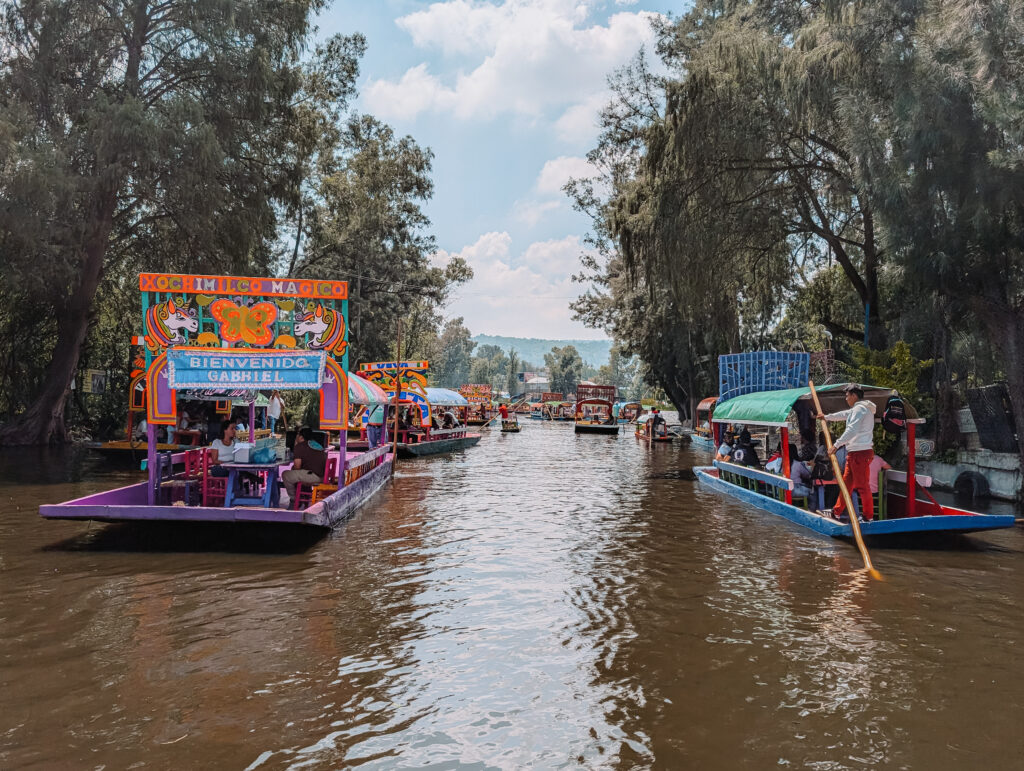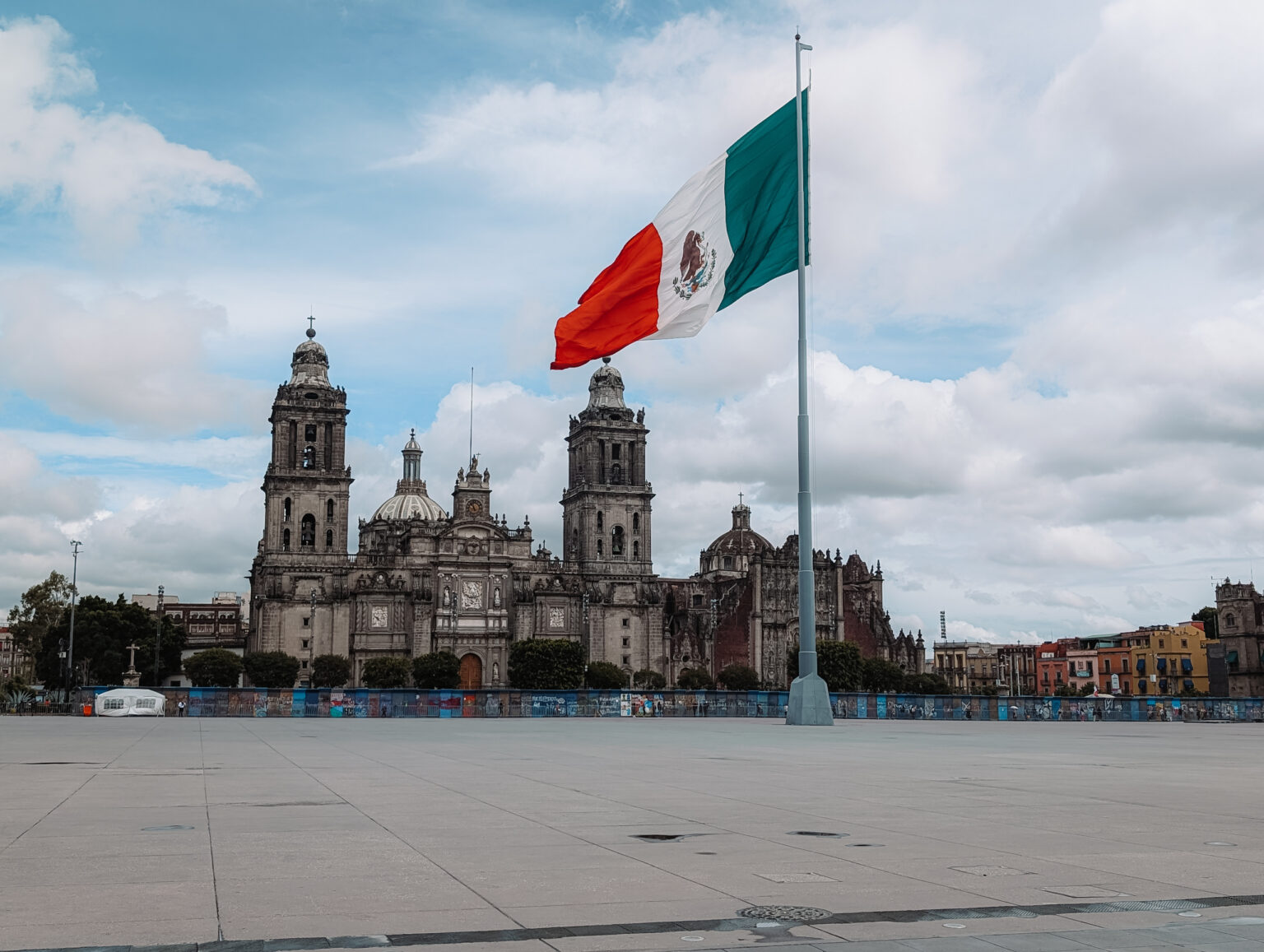Is Visiting Mexico City Safe?
Because of what you hear in the news (and what you see in TV shows like Narcos) you may be wondering if visiting Mexico City, and other parts of Mexico, are safe. This is a common question. The best resource to determine the safety of a destination is your country’s State Department website regarding a particular country. This should be your first resource to go to when researching the safety of a country.
Here is the link to the United State’s travel advisory for Mexico. This lists the different locations, cities, states to avoid completely, reconsider travel to, and exercise increased caution and is broken down by state in Mexico. The list can be overwhelming and it can be challenging to figure out the state that you are traveling to within Mexico. (For Mexico City, the city is its own province.) You can also look at this map to determine the areas that you are comfortable exploring. We recommend traveling to locations where you can exercise normal precaution (no color) or increased precaution (yellow). Increased precaution areas typically have crimes that include robberies and muggings so be more cautious with your belongings and avoid wearing flashy clothing and accessories that could attract attention. Avoid deserted areas especially in the evenings, consider taking taxis or Uber after dark, and stay within touristy areas.
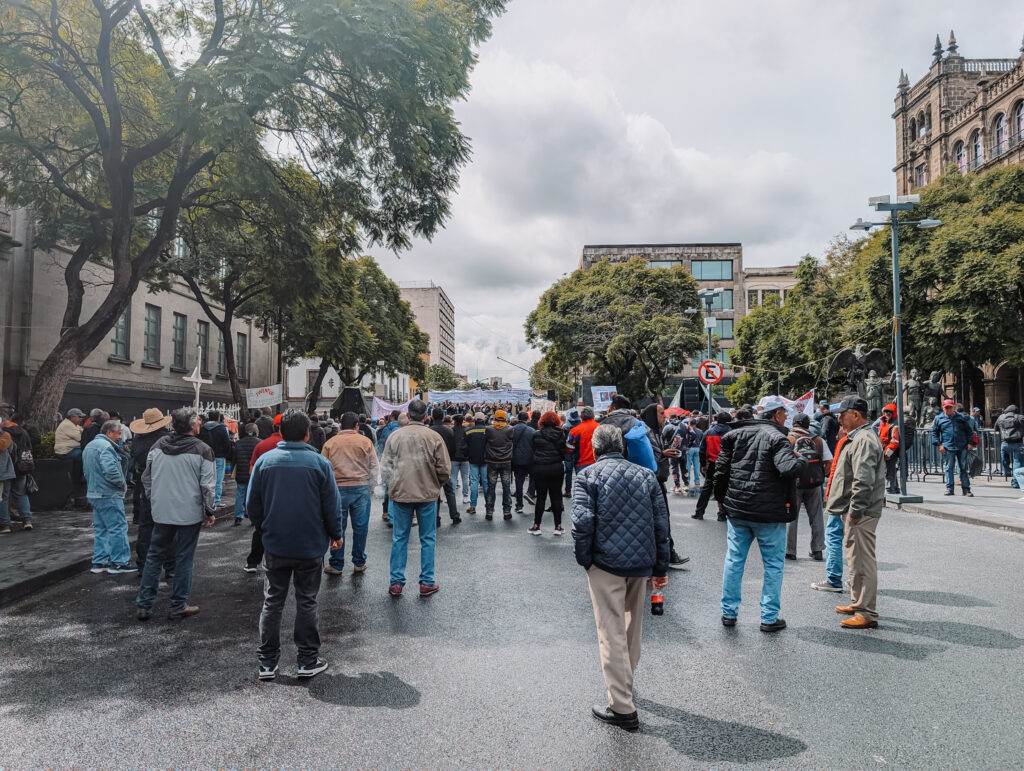
In Mexico, you will want to avoid areas highlighted orange and red on the map. These regions have issues with narco traffickers with crimes that include kidnapping or murder, and, even if these crimes are targeting other gang members, you may be caught in the crossfire. In some cases, the government may have lost complete control over some of these areas.
To be extra cautious, you can look at the recommendations of different countries to best make your decision on where to visit. These sites are based on information from the embassies within the countries and their conversations with the local governments throughout the country.
Where to Stay When Visiting Mexico City
Condesa
Condesa is one of the most popular neighborhoods for expats in Mexico City. It is full of cafes, restaurants, bars, and boutiques that cater to the hip residents of this area. The neighborhood has tree-lined streets and feels very residential. There are a number of boutique hotels at a variety of budgets to satisfy most travelers who are visiting Mexico City. This neighborhood is conveniently located because it is near many public transportation lines that can take you throughout the city.
Polanco
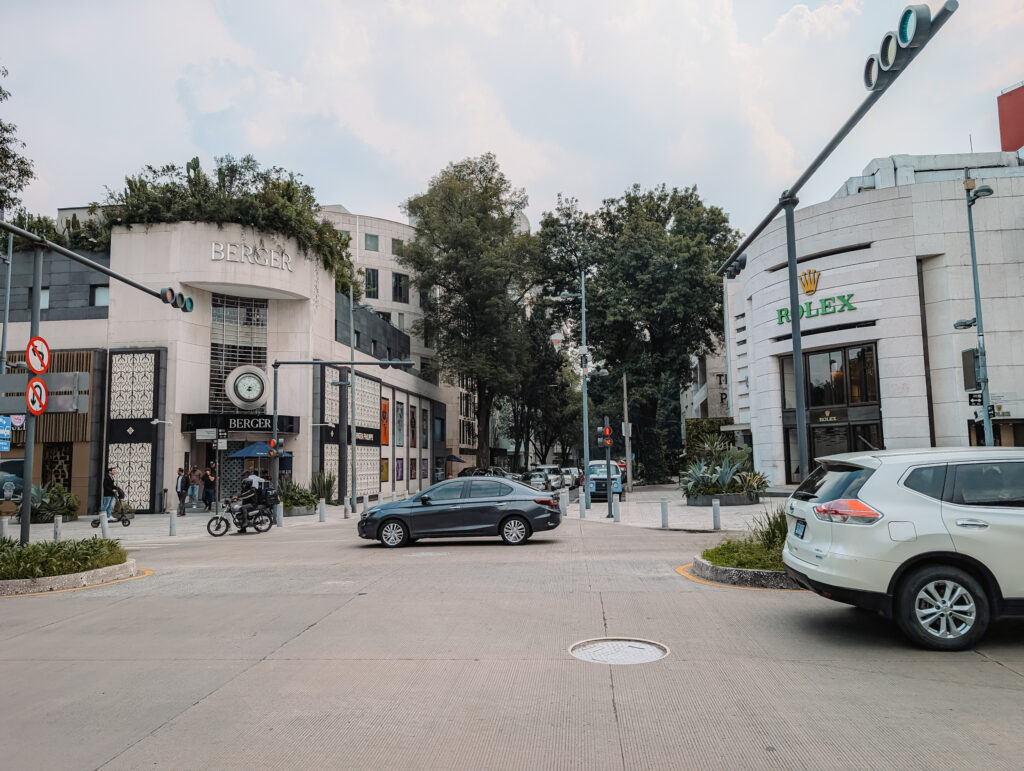
Polanco is one of the wealthiest neighborhoods in Mexico City. It is full of high-end shopping and restaurants and is best for tourists who want to explore the luxurious side of the city. This neighborhood is also conveniently located because it is near public transportation lines that can take you throughout the city.
For Those Who Have Already Visited Mexico City Before: Coyoacán
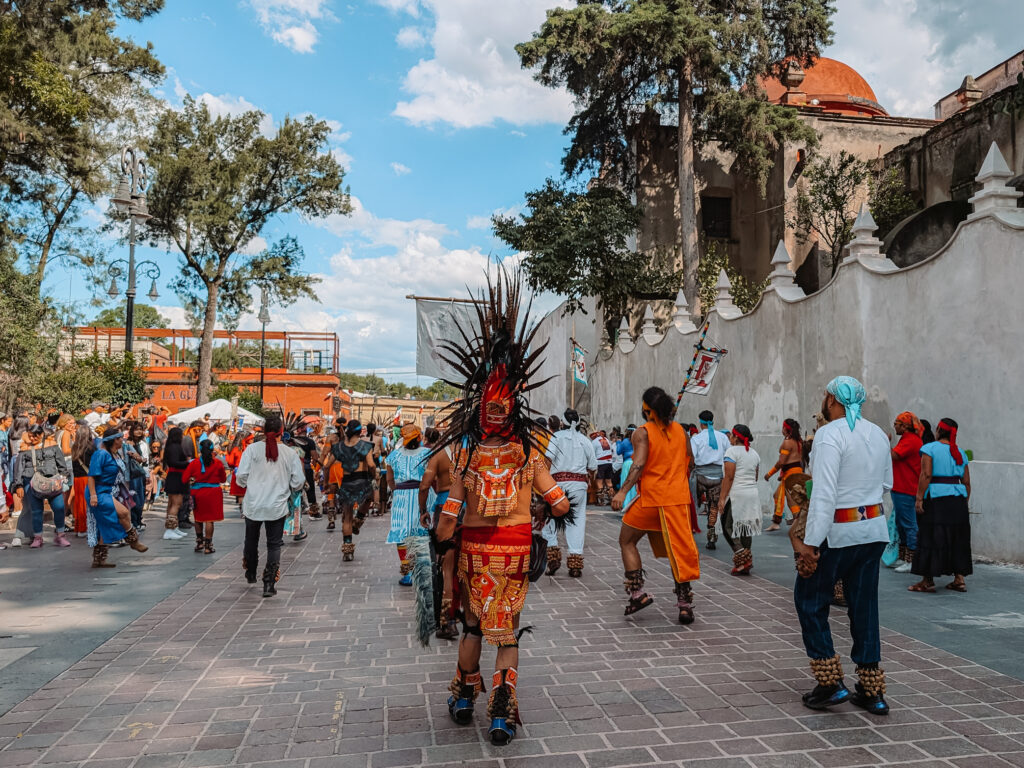
If you have already explored much of the touristy destinations within Mexico City, consider staying in Coyoacan. This neighborhood is a little further from the center than the other neighborhoods on this list. It includes the Frida Kahlo Museum and has an overall artistic and bohemian charm with colorful streets that can be wandered through peacefully. It is the perfect neighborhood for families seeking tranquility. Look to stay between Plaza Jardin Hidalgo and the Coyoacán metro station to be located in the most convenient area of the neighborhood.
Our Recommendation: Roma Norte
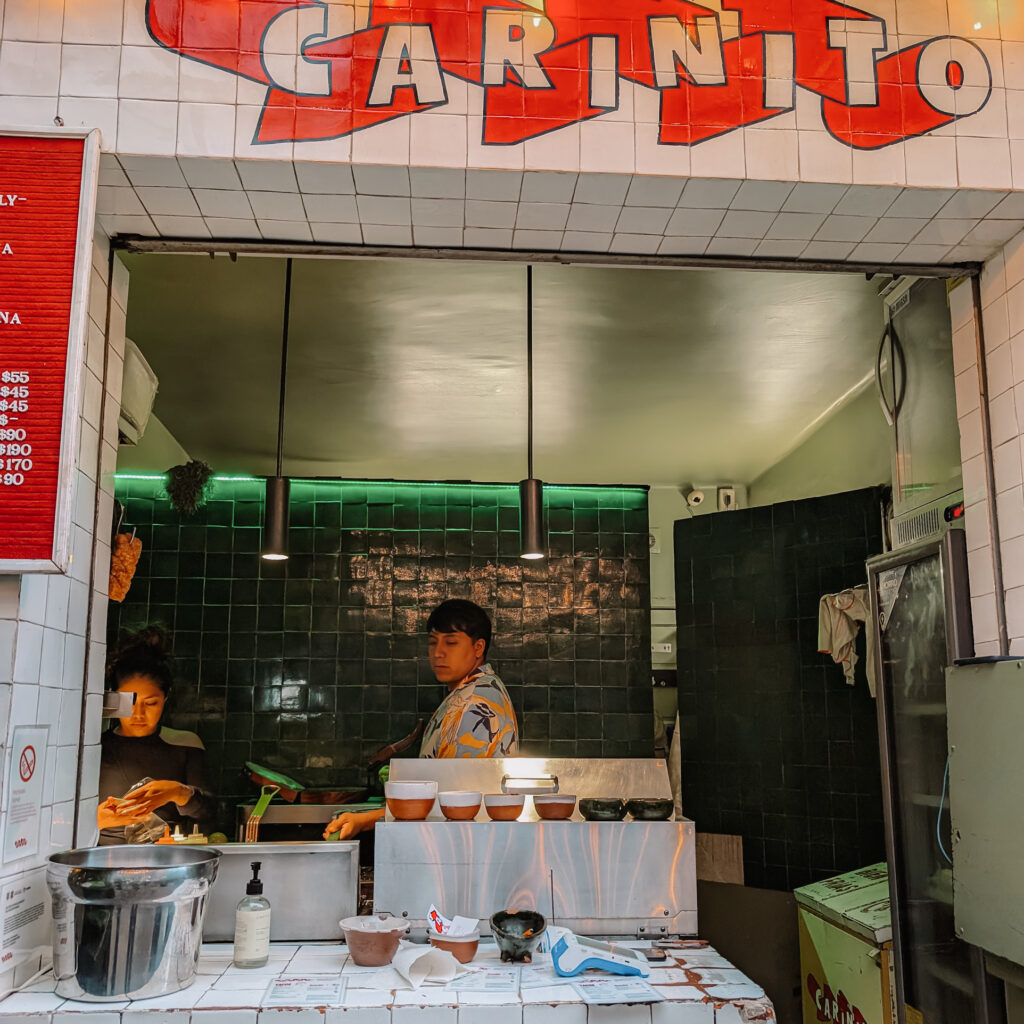
Roma Norte is the neighborhood that we recommend when visiting Mexico City. The neighborhood combines residential areas with boutique shopping with great street food options. Unlike Polanco and Condesa, which have been gentrified by international investment into the city, Roma Norte maintains its culture and character, all while continuing to evolve with some modern restaurants and bars throughout. There are also a wide variety of accommodations within the neighborhood, including long term accommodations, hostels, boutique hotels, and luxury spots. This neighborhood is conveniently located because it is near many public transportation lines that can take you throughout the city.
Can I Eat the Street Food?
You will read through our articles about visiting Mexico City, Mexico in general that we are huge fans of street food in this country. It is often considered that the street food is some of the best that Mexico has to offer (although it does have delicious restaurants as well). The value of the food from the streets is truly unmatched. That being said, there is always a risk.
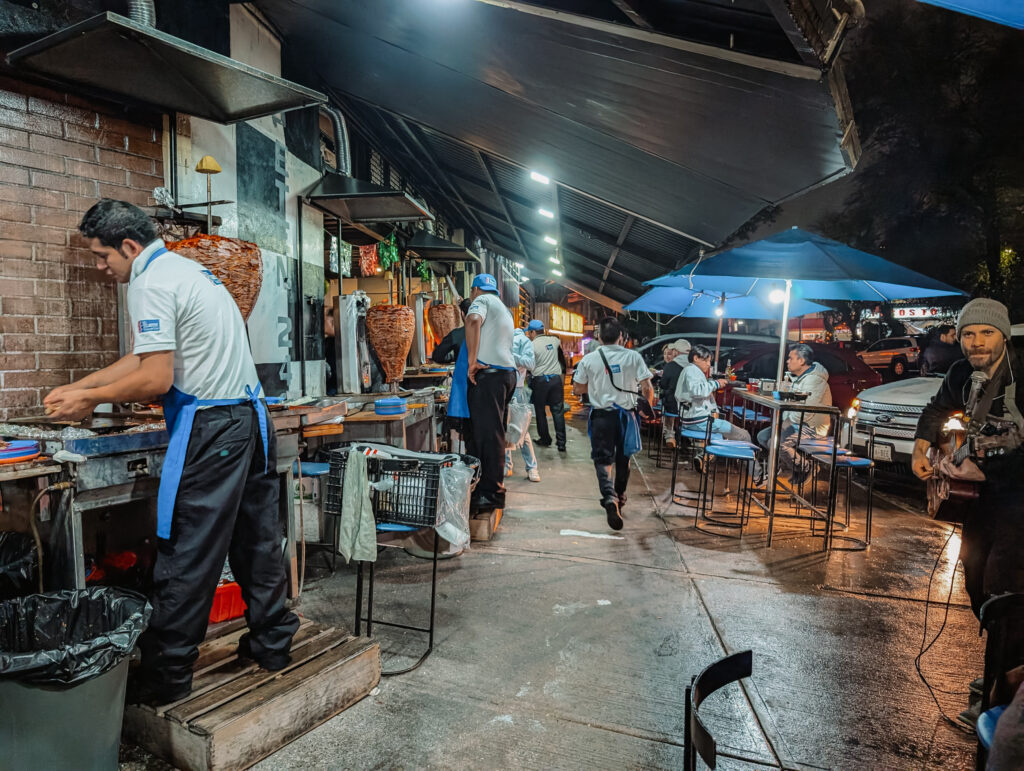
Let’s start by talking about tap water in Mexico. Avoid drinking any tap water in the entire country of Mexico. Even the locals do not drink the tap water (and our typical rule is to follow what the locals do not do). Any water that is used to clean plates or make food is going to be filtered or bottled water.
However, you should avoid any fruit that is not peeled (and potentially fruit that is not cooked). We have heard that fruit causes some digestive issues for travelers. Mexico is notorious for causing digestive issues, sometimes because of the different spices that they use that your stomach may not be used to. You can go to your doctor prior to your trip to talk to them about your options if you have concerns.
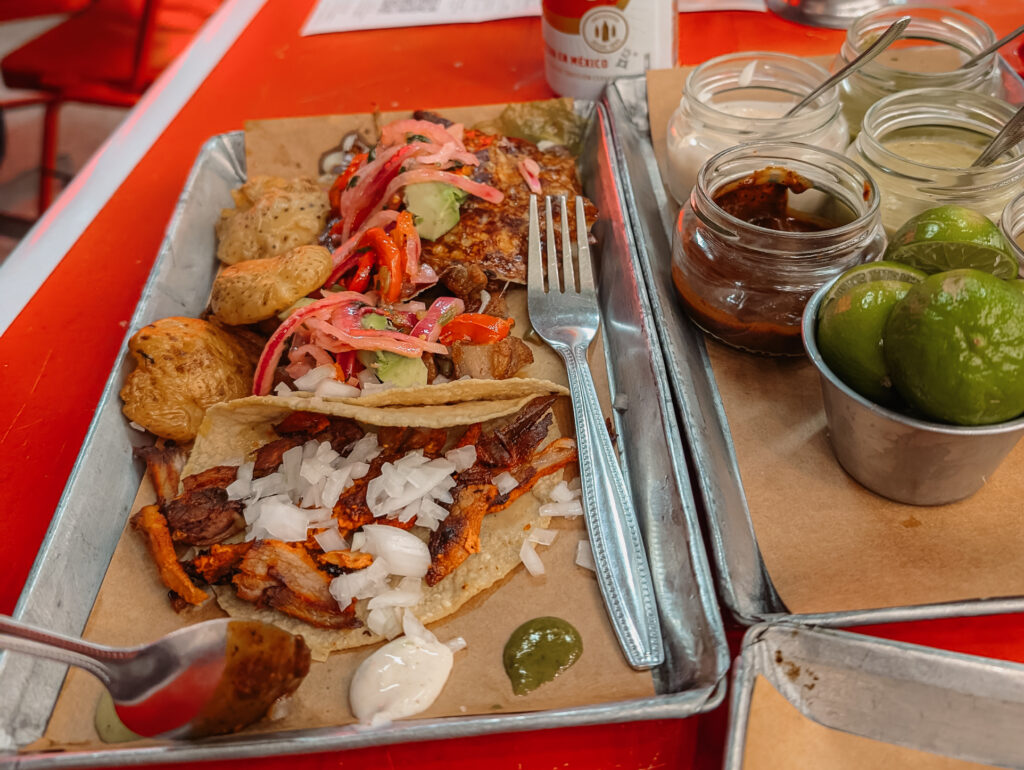
How to Get Around when Visiting Mexico City
With Public Transportation
The public transportation system in Mexico City is prolific and safe to use. However, it is a little complex due to the variety of different forms of transportation you can take, including the MetroBus, Metro, and CableBus systems. You will find that the public transportation in Mexico City is safe and very clean; the people of Mexico City are incredibly proud of and grateful for this transportation system and they take great care of it. The public transportation tends to be very crowded (it’s a city with a huge population!) so be prepared to deal with this.
Metro 
The metro is the underground system that runs through the city. Designed for the 1968 Olympics, this system can help you get around the traffic problems that plague this city. That being said, the train cars can be quite packed and people are not afraid to push and shove to get into them. Do not be afraid to push yourself into a train car if you really need to get to your destination. For women and children, the first train car is reserved for you. While they can still get quite packed, they are more comfortable for women than the regular metro car.
Metrobus
This is a connected and major bus system within the city that uses designated lanes and has predetermined stations, much like a metro or subway system. As a result, this form of transportation could also help get around the majority of traffic issues within the city. Similarly to the metro, the bus has a designated section that is reserved for women and children, especially during rush hour. There are other buses within the city (with a different symbol) but they do not have the designated bus lanes.
To take the metro, the metrobus and other forms of public transportation in Mexico City, you need to purchase a card at one of the Metrobus stations or Metro stations with cash and you can always add more money onto the card throughout your trip. You can then use the card to tap into the different stations and one card can be used for multiple people. For going long distances, public transportation is the most efficient way to get around.
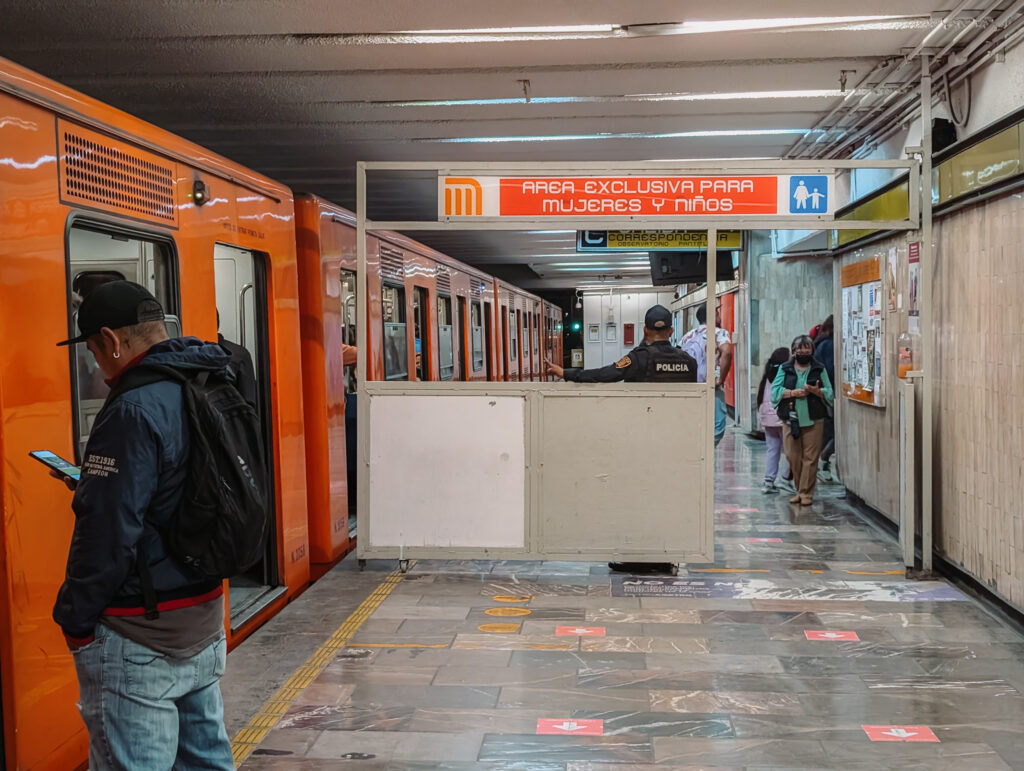
Walking Through the City
Walking is a great way to get to see different parts of the city, especially the different neighborhoods listed above. Take more caution traveling between neighborhoods that you are unfamiliar with but the area within and between Condesa, Roma Norte, and Polanco is a very safe part of the city and you should feel comfortable exploring this part of the city easily. When going to lesser known regions, it is best to take Uber or public transportation to avoid traffic issues.
Using Uber
Uber is a great way to get around the city, especially in the evenings. The reason we highlight Uber rather than taxis is because they reduce the possibility of being scammed, which could happen as foreign tourists with taxis (or people who pose as taxis). When it comes to Uber, you know the price upfront and the navigation of the car is tracked. In addition, it removes any communication barrier that you may have when visiting Mexico City. The downside to taking Uber is that there may be a lot of traffic between you and your destination. If that is the case, you may want to consider taking public transportation.
Do I Need Cash When Visiting Mexico City?
Yes! Many of the street vendors only take cash and this will be the best food that you will try when visiting Mexico City. It is best to carry cash on you for any treats that you see that you may want to get, such as churros! You can get cash from any ATM in Mexico City using your bank card. You will most likely get a better exchange rate than at a currency exchange within the city. Yes, you will have an ATM fee but try and take out cash only once to avoid paying multiple fees. (You still have to pay a fee at a currency exchange so might as well use an ATM and get a better rate!)
